John Hurrell – 26 October, 2013
Utopia IV is like a synthesis of the other two, with a wider palette (violet added), and some new exploding and contracting buildings. The movement is horizontal, from right to left, panning along strange grey trays, ramps and towers accompanied by lush vegetation, red sludgy pools and cracked desert landscapes.
Gregory Bennett‘s latest exhibition features three animated videos and six framed digital prints that have been constructed from two of them. The prints don’t reference the most recent video, Dromosphere 1, yet this work might be regarded as the most interesting work in the show, for with its use of constructivist-like beams and angles, it in parts comes closer than the others to being a form of modernist kinetic sculpture - George Rickey on speed.
Each of the three videos has its own sensibility and focus in subject matter. Dromosphere 1 is all about a modernised Tower of Babel, and relentless architectural construction upwards. In the past Bennett’s compulsively marching hordes of naked men have dominated the action but in this grey and blue work the building materials also have kinetic power. Swarms of swirling beams, flying corner struts, spiralling clouds, airfilled membranes, and sprouting crystals have an animistic presence as if containing independent minds of their own. They’re not dominated by the humans, and could also be pantheistic - featuring a unified orchestrating force that slowly moves up the revolving column with its various platforms of feverishly busy builders.
Dromosphere 1 is on a plasma screen but Florotopia is projected on a large wall, extending from floor to ceiling. It seems to be a benign version of Bosch’s Garden of Earthly Delights - with strange, vaguely giant, human, ceramic forms on which the armies of tiny people exercise, gyrate and dance. The intense (often toxic) colour is almost disembodied - lots of garish crimsons, pinks and greens, and grey and blue - attached to luscious seaweed-like rippling grasses, delicate florets and fluffy airborne dandelions. Again the movement is vertical, moving up. This loop is also twice as long as the others.
Besides being botanical, Florotopia is more humorous than the other two, with men in circular formations doing high kicking Busby Berkeley routines, and when in isolation, sprouting red branches, perhaps alluding to the symbolism of Botticelli. The clusters of writhing communal exercisers are duplicated several times, often with the same group of animated figures ‘filmed’ from several angles. The fact that there are no women is part of the calculated absurdity, much mirth caused by the pace and posture of body movement as much as the actual sequences of contortionist gesture.
Utopia IV is like a synthesis of the other two, with a wider palette (violet added), and some new exploding and reassembling buildings. The movement is horizontal, from right to left, panning along strange grey trays, ramps and towers accompanied by lush vegetation, red sludgy pools and cracked desert landscapes. Like everywhere else, every moving image has its accompanying shadow. Some marching figures are headless, spouting flames, smoke and even torrents of blood. At times the prevailing futuristic mood becomes apocalyptic and gory.
Within this show, Bennett‘s use of movement is such a viscerally imposing experience that the static prints are completely upstaged, seemingly mere illustrations for the competing, much more visceral, video art ‘encounter’. They lack the mesmerising power of physical presence, despite their vibrant colour, rich humour and intricate detail.
John Hurrell
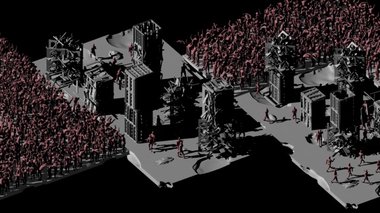

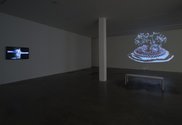
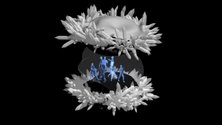
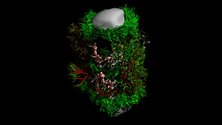
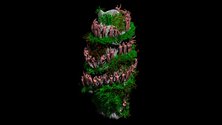
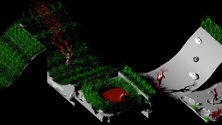

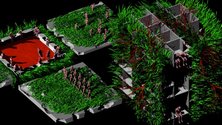
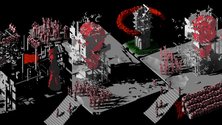
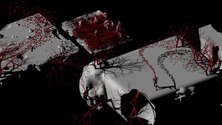
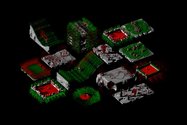
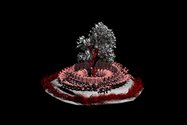
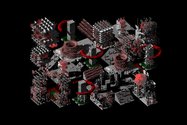
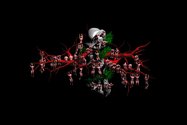
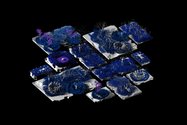
 Advertising in this column
Advertising in this column Two Rooms presents a program of residencies and projects
Two Rooms presents a program of residencies and projects



This Discussion has 0 comments.
Comment
Participate
Register to Participate.
Sign in
Sign in to an existing account.